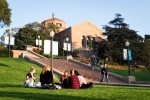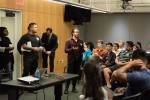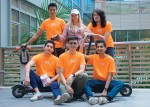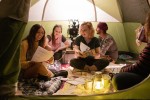Beijing. London. Sochi. Rio de Janeiro.
$45 billion. $18 billion. $50 billion. $20 billion.
The Olympics come with a lot of fanfare – and some very big price tags.
And Los Angeles might just be the next victim of the Olympics’ financial curse if it’s not careful in 2028.
The pride of hosting seems to always be swiftly followed by financial disaster. After seeing the disastrous debt following the 2016 Rio de Janeiro and 1976 Montreal Games, in which corruption and overspending left the cities $113 million and $1.19 billion in debt, respectively, it’s no wonder critics are paranoid about the money.
In the past, cities have used a mixture of public and private funds to finance the games, placing a burden on taxpayers to cover the costs. If the games go over budget, which they often have, the city is saddled with the debt.
The LA 2028 organizing committee, responsible for organizing the 2028 Games in the City of Angels, released a privatized budget nearing $7 billion and at least $500 million of combined state and city backing to cover overflow. And if the history of the Olympics has shown one thing, it’s that there is always an overflow.
But that doesn’t mean that there has to be. The 1984 Los Angeles Olympics didn’t, becoming the first Summer Olympics since 1948 to generate a financial surplus.
The city is in for an uphill battle if it hopes to recreate its previous financial success. The LA 2028 organizing committee seems intent on following the 1984 Games’ success formula, but the city has a lot of homework to do if it wants to adapt the 35-year-old plan to the modern age. The population has only grown and the upgrades its infrastructure needs have only become more dire and expensive – the tactics of the late 20th century aren’t going to match the magnitude of a 21st-century Olympic Games.
LA avoided handing down a massive debt to taxpayers in 1984 by utilizing an entirely private budget rather than relying on tax money.
“All revenues were raised privately from ticket revenue, sponsorships, TV deals – which compelled them to live within their means,” said Zev Yaroslavsky, a city council member during the 1984 Games.
The city seems to be trying to do the same thing this time around. It also plans to use existing stadiums, such as Pauley Pavilion and the Rose Bowl, to host the athletic events. UCLA and USC will be used to house athletes and the media, respectively, and existing transportation systems will be used to facilitate movement across the city.
This gives LA an advantage over other cities, such as Sochi and Tokyo, in that it can save money by not having to build an entirely new Olympic Village.
“Every financial decision has to be seen as an existential decision – every expenditure has to be absolutely necessary,” Yaroslavsky said.
However, existing infrastructure is already being stretched to capacity. The games have only grown over the years with an estimated 500,000 tourists visiting the 2016 Games.
And the city already deals with famously bad traffic from its normal population – imagine the horror show the 405 will become with hundreds of thousands of visitors. Traffic actually improved in 1984, due to better real-time traffic data and public transportation, and the city’s work with employers to shift workers’ schedules, limiting the number of cars on the roads. But so far, LA does not have a solution to these issues for the upcoming games.
The 1984 Games also featured repressive societal practices. In order to make a pretty picture, the city swept aside its poor and marginalized communities and conducted “gang sweeps,” jailing many African Americans and Latinos suspected of being in gangs without due process.
Reports of police brutality, a crime which is rarely prosecuted, spiked by 33% from 1984 to 1989, according to The Nation. The increased militant police presence from these Olympics can be linked to the 1992 LA race riots and issues with policing today.
Homelessness and social stratification have only become more visible as rents have risen alongside police violence against minority communities. If a similar crackdown is used again, we’re in for a serious humanitarian crisis accompanied by a massive public outcry.
The 1984 Games are a cautionary tale for the city and the LA 2028 organizing committee. Pushing the glaring issues from four decades ago out of view or failing to act preemptively to help the city adapt and limit expenditures is a recipe for an ugly 2028 and beyond.
Of course, it might seem like the city is simply not equipped to handle hosting the Olympics, regardless. This is a valid concern, but remember: LA seemed woefully unprepared for the 1984 Games. By operating frugally, practically and intelligently, it pulled off a miracle and ran a financial surplus. The city can do the same this time around – but only if it adequately adapts the 1984 strategy.
The 2028 Olympic Games present an opportunity for Los Angeles. If done right, the games can be a festival for the city and world. But LA 2028 must learn from the past for this to happen.
Because if it fails, Angelenos will feel the curse for years.






